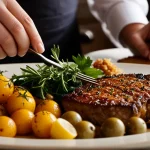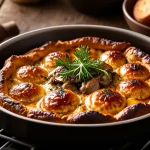Core elements of traditional UK cooking and their origins
Traditional British cuisine is deeply rooted in the UK culinary history, reflecting a tapestry of regional influences, seasonality, and resourcefulness. At its core, traditional UK cooking relies on staple ingredients such as root vegetables, hearty meats, and grains that were historically accessible and could endure the often unpredictable British climate. Techniques like roasting, boiling, and stewing formed the foundation for many key dishes, emphasizing simplicity and nourishment.
Regional variations also play a significant role in shaping the culinary landscape. Coastal areas, for instance, incorporate abundant seafood into their fare, while inland regions favored game and agriculture-based ingredients. Pies, puddings, and roast dinners emerged as signature historic dishes, each embodying not only cooking methods but also the importance of food culture in everyday life. The focus on seasonality and making the most out of available resources shaped these dishes, ensuring sustainability long before it became a modern movement. By understanding these historical UK cooking methods and ingredients, one gains insight into how British food evolved and maintained its distinct identity over time.
In the same genre : How can you perfect the balance of flavors in a classic trifle?
Key traditional dishes and ingredients influencing contemporary British cuisine
Traditional British cuisine has left a profound imprint on modern British food through its enduring staples and time-tested ingredients. Classic dishes like fish and chips, shepherd’s pie, and Cornish pasties continue to form the backbone of British food culture, cherished both in their original forms and in contemporary adaptations. These dishes exemplify how traditional UK ingredients—primarily root vegetables, hearty meats, and grains—remain central to British cooking today.
Root vegetables such as potatoes, carrots, and parsnips have historically provided essential nutrition and texture in recipes like shepherd’s pie and roasted dinners. Similarly, meats including lamb, beef, and pork illustrate the continuation of time-honored livestock use, reflecting both flavor and tradition. The importance of preservation methods—curing, pickling, and smoking—also persists, ensuring not only extended shelf life but enhancing taste complexity. These techniques were indispensable in historical UK cooking methods and have been adapted to suit modern tastes without losing their essence.
Also to see : What are the best techniques for preparing a hearty toad in the hole?
As contemporary chefs reinterpret these classics, the ingredients underpinning British staples serve as a reliable foundation. The familiarity of these components encourages innovation while preserving the cultural significance embedded in each dish. This balance between tradition and adaptation highlights the dynamic role traditional British cuisine holds within the evolution of modern British cuisine, sustaining a culinary identity rooted firmly in history yet open to new influences.








